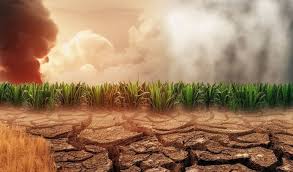Islamabad, Oct 31: Climate Change May Slash Pakistan’s GDP by 21% by 2070, Warns ADB. According to the Asian Development Bank (ADB), under a high-end emissions scenario, climate change might reduce Pakistan’s GDP by 21.1 percent by 2070.
According to the Bank’s most recent report, “Asia-Pacific Climate Report 2024, Catalyzing Finance and Policy Solutions,” under a high-end emissions scenario, climate change could cause a 17 percent GDP decline in Asia and the Pacific by 2070, which could increase to 41 percent of GDP by the end of the century.
The most detrimental climate effects are expected to be labor productivity losses and sea level rise, which would disproportionately affect lower-income countries and the poorest people in the region.
According to the report, these losses are concentrated in Bangladesh (–30.5%), Viet Nam (–30.2%), Indonesia (–26.8%), India (–24.7%), “the rest of Southeast Asia” (–23.4%), higher-income Southeast Asia (–22.0%), Pakistan (–21.1%), the Pacific (–18.6%), and the Philippines (–18.1%) out of all the countries and subregions that were evaluated.
Since the difference between 2050 and 2070 losses is larger than that between 2030 and 2050, losses rise more quickly with time. These losses align with the upper bound of econometric estimates and are significantly higher than previous model-based losses. They also affirm that the Asia-Pacific region’s future well-being will depend on climate policy measures, such as adaptation and mitigation.
Heat waves have a significant impact on labor productivity in many nations, ranking second or even surpassing other losses. The region’s 2070 GDP loss due to lower labor productivity is estimated to be 4.9%. Tropical and subtropical regions are particularly affected. These comprise Viet Nam (–8.5 percent), India (–11.6%), Pakistan (–10.4%), and “the rest of Southeast Asia” (–11.9%).
The natural resource sector, which includes forestry, fishing, and agriculture, has suffered significant losses. By 2070, the region’s GDP will have lost 2.1 percent due to shocks to these climate-dependent industries.
Pakistan (-12.0%) and “the rest of South Asia” (-6.0%) had the highest total losses from these sectors. Higher-income Southeast Asia (-4.5 percent), Indonesia (-4.5 percent), “the rest of Southeast Asia” (-4.3 percent), the Philippines (-4.7 percent), and Viet Nam (-4.1 percent).
Poor communities are likely to be the most affected because the biggest economic effects of climate change are occurring in regions of Asia and the Pacific with lower relative incomes, such as Bangladesh, India, Indonesia, Pakistan, the rest of Southeast Asia, Viet Nam, and the Pacific.
These effects include increased coastal flooding, decreased labor productivity, and decreased productivity of natural resources. People in poverty are more likely to work in industries that are subject to rising temperatures, rely on industries that use natural resources for their livelihoods, or reside in places that are vulnerable to flooding and storm surges. Additionally, they are the least able to adjust and deal with these shocks.



